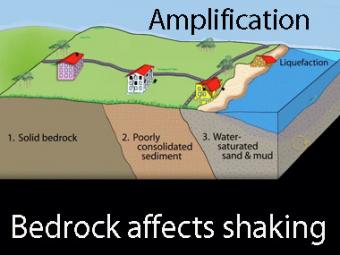
How will 3 buildings, engineered equally, on different bedrock react to an earthquake?
Highly generalized animation reflects the arrivals of P, S, and surface waves to 3 closely spaced buildings. Exaggerated movement of the buildings reflects the relative motion recorded by the seismograms. The 4th building on the beach shows the effect of liquefaction of underlying sediment. Animation ends with actual seismograms from buildings on solid bedrock and sediment fill equal distance from the 1989 Loma Prieta M7 earthquake. Original music by Jesse Gay, Portland OR.
CLOSED CAPTIONING: A .srt file is included with the downloiad. Use appropriate media player to utilize captioning.

Video lecture on wave propagation and speeds of three fundamental kinds of seismic waves.

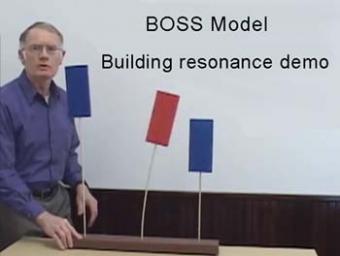
The BOSS model is an effective way to show how buildings of different heights respond to seismic waves. All buildings have a natural frequency.
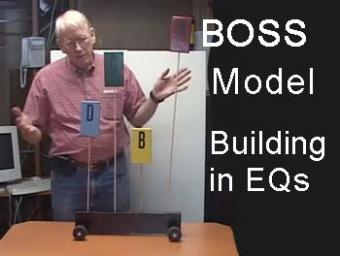
This video lecture shows John Lahr (USGS Seismologist Emeritus) describing the BOSS experiment that models oscillations of different height buildings.
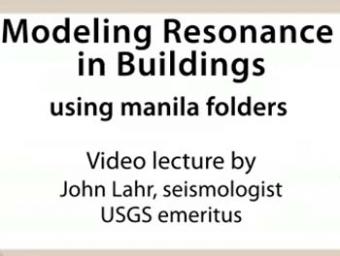
John Lahr, US Geological Survey Seismologist, demonstrating a cheap and kid-friendly version of the BOSS model that shows how buildings of different height oscillate during earthquake shaking.
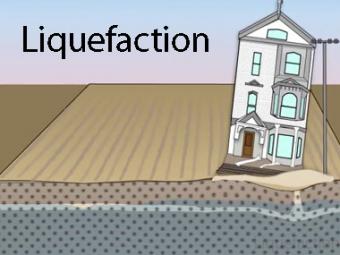
Liquefaction is a process by which water-saturated sediment temporarily loses strength and acts as a fluid. This effect can be caused by earthquake shaking.

Sand Boil: sand-laden water can be ejected from a buried liquefied layer and erupt at the surface to form sand volcanoes; the surrounding ground often fractures and settles.
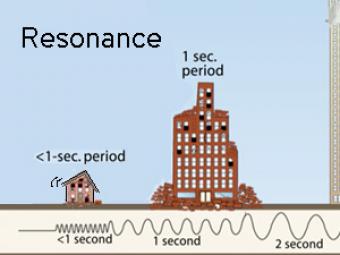
All buildings have a natural period, or resonance, which is the number of seconds it takes for the building to naturally vibrate back and forth. The ground also has a specific resonant frequency. Hard bedrock has higher frequencies softer sediments. If the period of ground motion matches the natural resonance of a building, it will undergo the largest oscillations possible and suffer the greatest damage.